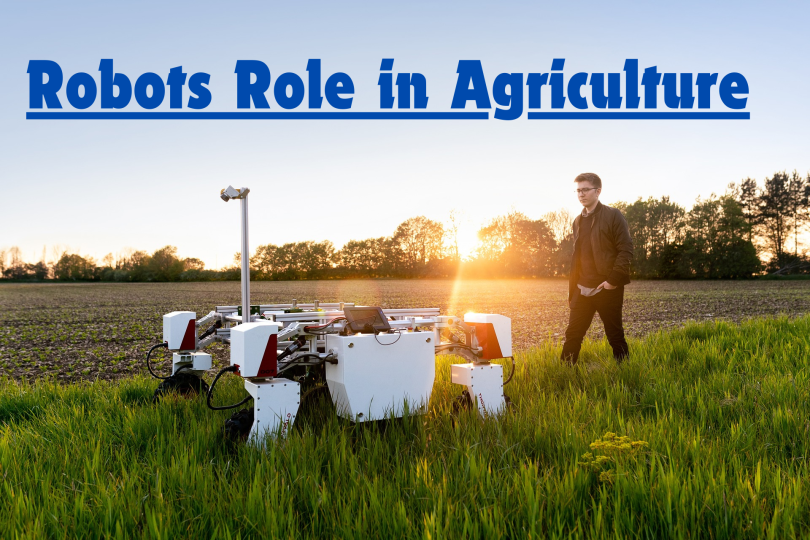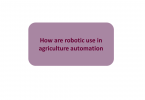Effective applications of robots:
A mechanical is a programmed gadget that performs capacities typically credited to people or just a machine as human. It is a machine that detects the climate, cycles, and reacts to the sensor’s data with a PC order. They are man-made mechanical gadgets that can move without anyone else and whose movement should be demonstrated, arranged, detected, incited, and constrained by programming. It will play out its errand or capacities day and night without whining. Uses of robots are as of late irregularly spreading each day as the chance of supplanting human administrators gives powerful arrangements and profit from speculation. Anyway, robots are particularly significant when the obligations that are should have been performed are possibly risky or unsafe for laborers or when moderate issues should be tended to.
The majority of the robots have somewhere around five sections for example sensors, effectors, actuators, regulator and normal effectors. Robots never become worn out however can in any case have a danger of breaking down when support isn’t led as expected. Rural advanced mechanics is the legitimate expansion of a computerization innovation into bio-frameworks like agribusiness, ranger service, green house and agriculture.
The Need for Intelligent Humanoid Robots in Agriculture
There is a necessity for the development of advanced humanoid robots in the sectors of agriculture due to the increased global population and subsequently increased food demand. Traditional employment in agriculture declines significantly, and such issues as demography, and urbanization only aggravate the problem.
Intelligent humanoid robots offer a transformative solution by enhancing agricultural operations in several key aspects.
Labor Shortages and Efficiency
Conventional animal and crop farming that requires human labor is affected by availability problems due to demographical changes and urbanization. This dependency is reduced by robots who perform activities most efficiently and exhaustively without getting weary.
Precision Farming
The agricultural robots include sensors and AI that help to measure and oversee soil condition, water and crop conditions with a lot of care. It also helps to develop an optimal irrigation and fertilization system, and pest control, thus facilitating higher yields and better utilization of resources, which is especially important for fragile crops.
Harvesting and Post-Harvest Care
Humanoid robots perform basic horticulture operations, including delicate operations like picking fruits and vegetables in a way that does not harm the produce. Firm post-harvest handling procedures such as sorting, cleaning, and packaging that come after the harvesting process also help in minimizing losses.
Weed Management
Robots, which are integrated with computer vision, detect and selectively eradicate weeds reducing the use of chemical herbicides and helping crops grow better since they are not in competition with the farmer.
Greenhouse Cultivation
Robotically managed greenhouses located close to large populations more often allow the growing of fresh and high-quality crops all year round.
Temperature, humidity, lighting and other environmental variables are managed by robots to maintain uniformity of produce and the rate at which crops grow.
Data-Driven Decision Making
To gather data on crop health, weather, and soil, robots can be deployed to work in real-time in the fields and provide farmers with data that they can use. As such, the data is applied in disease prevention as well as the optimization of resource allocation by using predictive analytics.
Sustainability Farming
By using minimum chemical components, conserving water, and having little impact on the soil, robots are environmentally friendly in farming. This helps in environmental conservation, since the amount of pesticide used by farmers is minimized, and resources are well utilized.
In a nutshell, intelligent humanoid robots represent a pivotal advancement in modern agriculture, addressing critical challenges while bolstering sustainability and productivity in food production systems.
Click here to learn more about Robotics Automation in Agriculture.
The way the robotic play important role in pesticide application:
Perhaps the most continuous and significant undertaking in agribusiness is the utilization of fungicides, herbicides, and insect sprays. It is incessant on the grounds that illnesses are a typical event on plants which influence the plant creation, and it is significant on the grounds that it can fundamentally affect crop yield and quality. Fungicide’s herbicides and insect sprays are largely pesticides utilized in plant assurance.
Current strategies either mechanical or manual utilized for pesticide application incorporate human association. Over the top measure of pesticides delivered to the general climate and the openness of the ranchers to these hazardous synthetics during the splashing system. Mechanical innovation is an elective technique for showering in agribusiness which gives different advantages like security supportability and natural effect. As far as wellbeing, it eliminates the rancher from the openness to risky synthetics. Furthermore, less pesticides implies better food items for the shopper.
Aerial robots in precision Agriculture:
One of the main utilizations of UAVs in exactness agribusiness was their utilization to quantify the water pressure in farming property. These days, the UAVs are outfitted with warm and hyper ghostly cameras just as fluorescence sensors. A fascinating examination is accounted for where the creators delivered a controlled shortage of water system to produce a slope of water pressure in a citrus plantation. They looked at the information acquired by the micro‐thermal and hyper otherworldly cameras loaded up on a fixed‐wing automated airplane with the estimations on the passes on approving the ethereal techniques to quantify the water pressure. Comparable works can be found in which show the achievability and advantages of the airborne warm symbolism to work on the water system.
Robotics in weeds control:
Commonplace weed control strategies incorporate among others mechanical or actual techniques, herbicide application, pre-rise or post-rise culturing, social control and natural control. Albeit the innovation for farm hauler mounted ongoing weed location and control presently can’t seem to exist the idea of robotized specific showering of weeds in rural fields has an extraordinary potential for diminishing financial and ecological expenses while keeping up with undeniable degree of weed control. Various innovations for weed identification, the board and spatial variable use of herbicide studies had been presented during the last decade and critically a wide scope of new advancements for exactness farming has been created and carried out in horticultural practices.




Leave a Comment